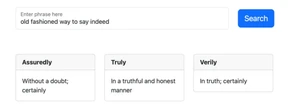Are you ageist? Odds are yes.
Ageism is one of the less acknowledged but more pervasive “isms” and occurs when making assumptions about a person or group of people based on how old you think they are. Ageism refers to prejudices and biases that people have toward both younger and older individuals. Since everyone is aging, most people will be subject to ageism at some point in their lives.
You might not think you’re ageist because you aren’t aware of the two most commonly discussed forms of ageism: institutional and interpersonal.
Institutional ageism: Embedded in laws, policies, and practices, especially by employers. institutional ageism is widely acknowledged but inadequately addressed. In a U.S. survey, nearly 80% of respondents ages 60 or older reported having been discriminated against due to their age, and a European survey found that ageism was the most commonly experienced type of discrimination, ahead of discrimination based on gender, ethnicity, disability, religion, or sexual orientation.
Interpersonal ageism: So ingrained in our day-to-day lives that it often goes unnoticed, interpersonal ageism is widespread. Two in three older adults (65%) reported exposure to ageist messages daily. This included often or sometimes hearing, seeing, and/or reading jokes about old age, aging, or older people (61%) such as “You can’t teach an old dog new tricks” or images portraying older adults as frail and less capable.
Self-directed ageism: This is our own fear of aging validated by societal norms and media messaging that creates ageist attitudes within us. If you’ve ever said “I’m too old for this” or laughed off a lapse in memory by saying “I’m having a senior moment,” then you are guilty of being ageist toward yourself.
It’s not your fault that you’re ageist; marketers and the media have normalized ageism. Proof point: The global anti-aging skincare market is expected to double in size to around $141 billion by 2034. Longevity biotech has piqued investor interest significantly over the past five years. Anti-aging medicine and longevity clinics are gaining popularity with doctors like Peter Attia, scientists like Andrew Huberman and David Sinclair, and biohackers like Bryan Johnson making headlines. Marketers created anti-aging campaigns, perpetuating fear of aging and mortality, and also invented generational labels to segment audiences based on age-specific stereotypes, falsely creating a generational divide.
Why this matters
Here are four personal incentives to check your internal ageist bias at the door.
1. You can live longer and healthier: Your mindset could be taking years off your life. Research shows that people with positive views on aging live 7.5 years longer than those with negative ones.
2. You could impact your financial security: The World Economic Forum published a report on ageism in 2020, summarizing, “The global community has a role and a responsibility to combat ageism, which is the single most impenetrable barrier to the pursuit of healthy aging.” The report demonstrates how being ageist negatively impacts our wallets in terms of lost productivity and unbridled healthcare costs.
3. You might enjoy your life stages more: If you could live to 120, would that change your career? A recent AARP study tabulated that 24% of people older than 50 say they do not expect to retire—ever. With more people working longer, the concept of retirement is fading, replaced by a fluid view of life chapters.
4. You could boost your career: Embrace age diversity to drive performance. Research shows that age-diverse teams create better work, foster two-way mentoring, and increase job satisfaction.
I started Primetime Partners in 2020, a venture fund that supports entrepreneurs who design solutions for health span, wealth span, and work span, hoping to improve the aging experience. Through our work, I have seen how all three forms of ageism impede innovation and change. Most bias is unconscious, and we can’t challenge it unless we’re aware. Today, on Ageism Awareness Day, and every day, here are three things we can do to be more aware of our ageist behaviors.
Change our beliefs to be more age-welcoming
Look through the Age Without Limits image library or David Stewart’s Instagram account, @weareageist. You will experience the positive lens of different ages and stages, and possibly see yourself in these images.
Invest in more intergenerational, and nonfamilial, friendships. My business partner, the venerable Alan Patricof, celebrates his 90th birthday in two weeks and works full time. He is one of several role models for a life well lived at every stage. Similarly, my peers who run venture firms in their twenties are important influences. The best antidote to ageism is intergenerational relationships.
Change how we speak to ourselves and others
How often have I said, “He looks great, for his age”? Conversely, how often have I sighed in frustration and said, “millennials”? We need to retrain our rote habits of derogatory age-based commentary.
Ashton Applewhite and Sheila Callaham are my beacons when it comes to changing how we speak about age. Applewhite’s book, TED Talk, and Old School hub offer age-equity resources. Callaham’s 200 articles, her organization the Age Equity Alliance’s training, or the Age Equity Alliance educational fall forum will deepen your understanding of how ageism shows up across the age spectrum and equip you with insights to thrive in the future of work.
Become an age-friendly employer, take the age without limits pledge, or raise awareness by posting your pro-aging perspective on your preferred social media channels using the hashtags #AgeismAwarenessDay and #TalkAboutAgeism.
Start today. You aren’t getting any younger.







No comments